Subscribe now to get notified about IU Jharkhand journal updates!
Factors contributing towards Spread of Fake News Through Social Media Among College Grads
Abstract :
The empirical study is based on the context of identifying some prominent factors among students for spreading of fake news through Social Media. The location of conduction of the study is Kolkata. To initiate the study extensive literature reviewhas been done to identify the well-defined factors for spreading of fake news in and around the world, especially among college students. After identification of the variable structured questionnaire has been prepared and randomly distributed among management students of Kolkata. Only 50 replies have been found legitimate to analyze. Then Principal Component Method of Factor analysis has been applied for classification of variables and for detecting structure in relationship between variables. However author limits the study to the data reduction and identification of most important factors which affects the spread of fake news among the sample. The study found that strong nationalistic attitude driven by perception, relationship with the sender and strong urge to generate massive likes and shares has been emerged as key factors among the several other factors to spread of fake news.
Keywords :
Fake News; Management Graduates; Social Media; factor analysis; Nationalistic Perception; likes and shares; relations.Introduction
Following the advent of web and internet more consumers are leaving the path of traditional media and hovering on online platforms to disseminate and share information and news. (Chen, Y., Conroy, N.J., Rubin, V.L., 2015). The practice is led to generation of fake or unauthenticated news, sometimes called as hoax and other information disorders (Bounegru, Liliana, Gray, Jonathan, Venturini, Tommaso, Mauri, Michele 2018). A Stanford University study of November 2016 found Generation Z’s surprising lack of media literacy. The study of more than 7,804 students from middle school through college found that 82% of middle school respondents were unable to differentiate between a real news story and a sponsored content. The study also found that more than two out of three middle school students saw no reason to doubt an article about financial planning written by a bank executive and that four of ten high school students were inclined to believe, without any further inquiries, that an uncredited, unsourced, out-of-context visual can also be an authenticate news. Even recently after the Pulwama Attack on 14th Feb., CRPF official twitter handle had to issue notifications for not spreading fake news about the incorrect harassment of Kashmir people and youths by CRPF. Many people consume news and are informed about current political and social affairs from social media platforms and networks (Allcott and Gentzkow, 2017) and it can often be difficult to tell whether stories are credible or not. Information overload and a general lack of understanding of how the internet works, have also contributed to an increase in the fake news or hoax stories. Both social media and users can play a big part in increasing the spread of these types of stories (Spohr, 2017). A recent research conducted by BBC News India has revealed that coverage of ‘fake news’ in the Indian media over the last three odd years has grown by nearly 200%, partly driven by the Cambridge Analytica exposes at the time of state elections. In the recent past the ‘fake news’ debate has mostly revolved around reports of often horrifying violence such as child kidnapping, mob lynching, Cow trespassing etc. with WhatsApp often seen to be at the center of the violence.
Literature Review
The term ‘fake news’ is not contemporary. Contemporary dialog, particularly media coverage, appears to outline fake news as infectious agent posts supported artificial accounts created to look like news reports. According to a recent study by Allcott and Gentzkow (2017), articles that fairly measure by choice and verifiably false, and could mislead readers, are defined as fake news. As Albright (2016) points out, fake news has become a buzzword, especially after the 2016 presidential elections in the United States, a democratic exercise marked by many info and false news. Mainstream news shops have reportable extensively regarding faux news, and even political institutions round the world have mentioned ways in which to curb the development (Scott and Eddy, 2017). A simple however well-accurate definition regarding the term of pretend news has been provided by Leonhardt and Thompson (2017) within their article in the New York Times, wherever they describe faux news as a sort of information or yellow and misleading journalism that consists of deliberate misinformation, spread via traditional media shops (their print or on-line editions) or on-line social media. On the other hand, a recent study (Tandoc et al. 2018) elaborates more on this by providing an overview of the varied kinds of faux news. Briefly, the study detects six types of fake news: news irony, news parody, fabrication, manipulation, advertising and propaganda (2018, p. 147). Summarizing these findings, one could describe fake news merely as stories that contain dishonorable and pretend facts that aim at either spreading information or influencing the audience’s affairs of state, or at manufacturing a funny content and making a profit. Some authors have also witnessed that fake news is no longer a realm of the marketing and public relations departments (Rubin, V.L., Chen, Y., Conroy, N.J., 2015). According to the definition of Michailidis and Viotty (2017), where they describe fake news as hoax-based stories that spread hearsay, rumors, and misinformation. Salvania and Pabico (2010) assured that news and the way information spread over social media networks appeared as a vital part of our lives were people are now reliant on on news for timely decision-making. Schifferes et al. (2014) noted that, as social media has become a primary source of news, fears about the reliability of information found on websites, such as Twitter and Facebook increase (p. 406). Wang (2007) found that students were overconfident about their ability to judge the reliability of information, possibly because of their technological skills and their ability to operate in a web environment. Wang noted that “students had unrealistic assumptions about their information literacy skills”, and they thought they know more than they actually did (2007, p. 598). The results of a recent large-scale study conducted by Stanford University between January 2015 and June 2016 on 7,804 students in middle schools and colleges showed that more than 80 per cent of students could not distinguish a native advertisement labeled “sponsored content” from a real news story. According to an Indonesian study in 2017 on higher education students, higher education student can become emotional and be misguided by the fake news as well as easily spread the fake news. According to the latest BBC research fake news is fast diffusing in India owing to a "rising tide of nationalism" where right-wing networks are much more organized than on the left, pushing "nationalistic fake stories" further.
Research Methodology
In this paper, author have done extensive literature review to identify the well-defined factors for spreading of fake news in and around the world, especially among college students. After identification of the variable structured questionnaire has been prepared and randomly distributed among management students of Kolkata. Only 50 replies have been found legitimate to analyze. Then Principal Component Method of Factor analysis has been applied for classification of variables and for detecting structure in relationship between variables. However author limits the study to the data reduction and identification of most important factors which affects the spread of fake news among the sample.
Statistical Analysis and Tests:
The internal consistency has been tested for the 10 items on a 5 point scale on SPSS V 22.0 software. The results are-

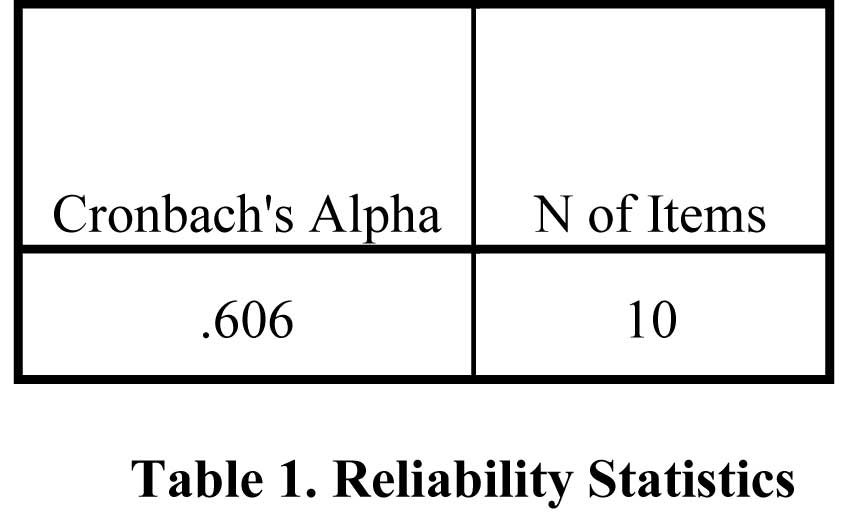
The result and the value of the reliability statistics shows acceptable value for understanding of the internal consistency among the variables taken. The table 1 alpha value of > .60 is acceptable for further analysis of the study.
For the finding of the most crucial components of the spread of fake news among the respondents and to contract it into a matrix author has used Principal Component Method of extraction that explains most of the variance of the correlated variables. In this method components generated are likely to be uncorrelated or weakly correlated with each other. The findings are below—
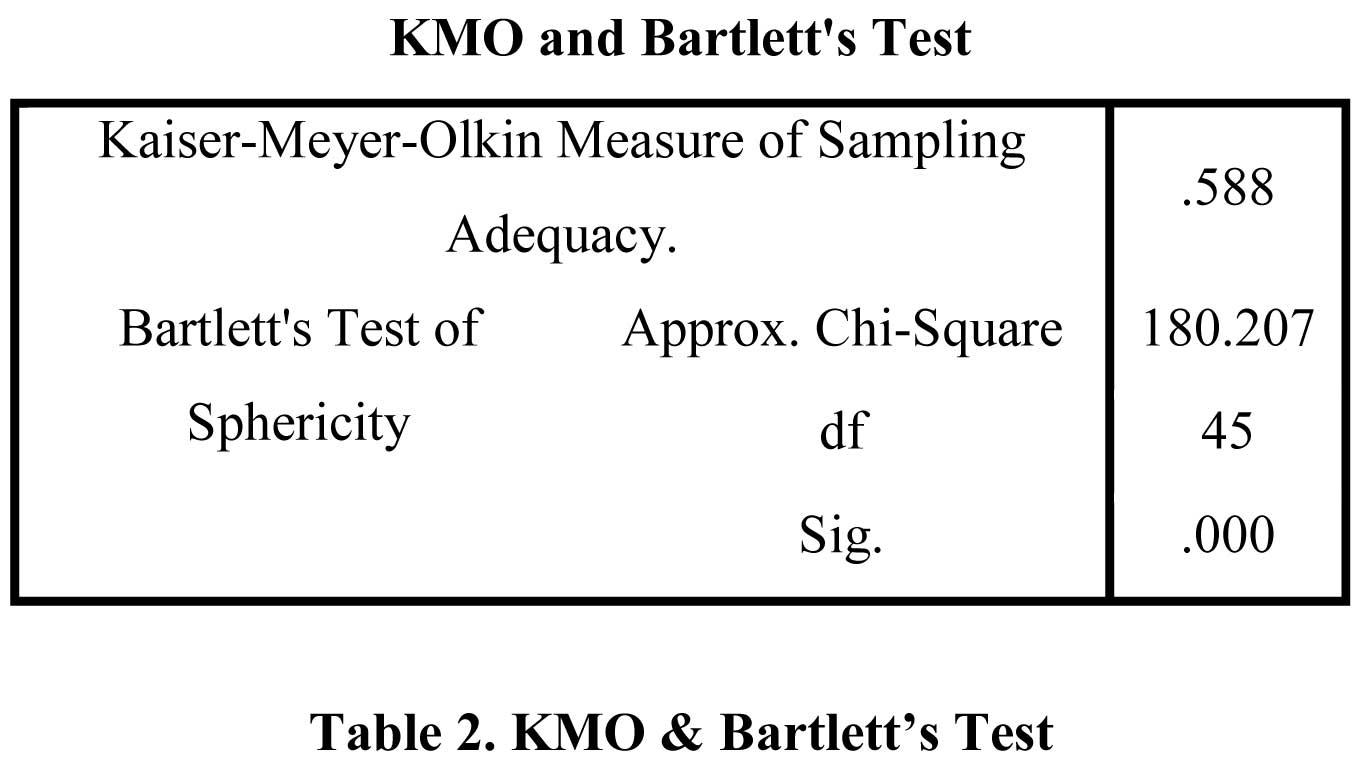
The table 2 displays the results for interpreting the adequacy of data for factor analysis and its value should be higher enough (In social science with less items any value >.55 is acceptable although higher value is expected) for the analysis undertaken. Here .588 value simply crosses the mark for acceptability for factor analysis.
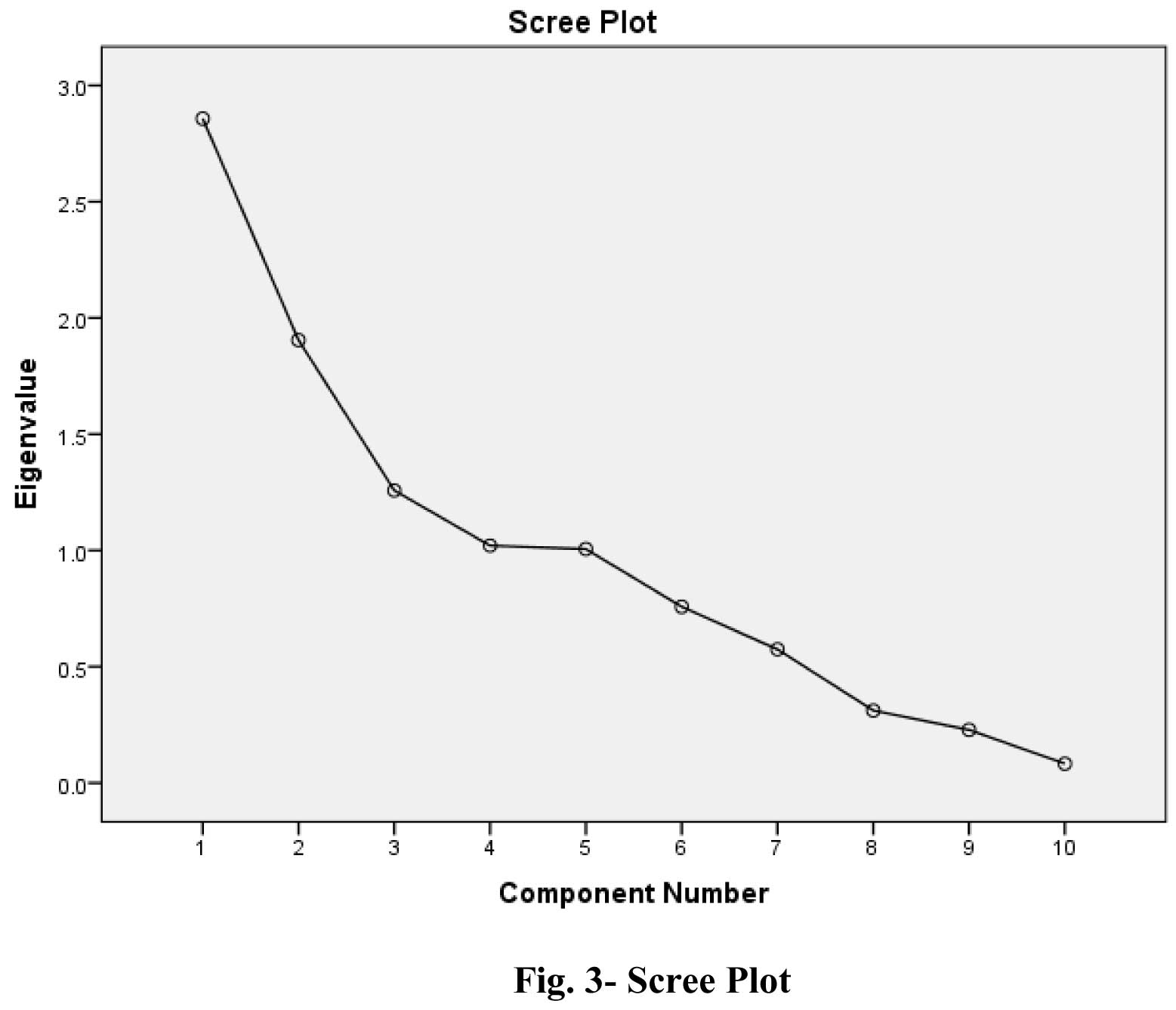
The Fig. 3 determines the optimum number of components. It plots the eigenvalue of each component. The number of components which fall on the steep slope are extracted because the eigenvalue of those components are greater than 1. The components beyond the point where the curve changes its direction and becomes horizontal (eigenvalue < 1 or equal) contribute very little to the variation and therefor they can be eliminated. In the study first three components lie on the steeper side, so the plot suggests optimal number of components are three.
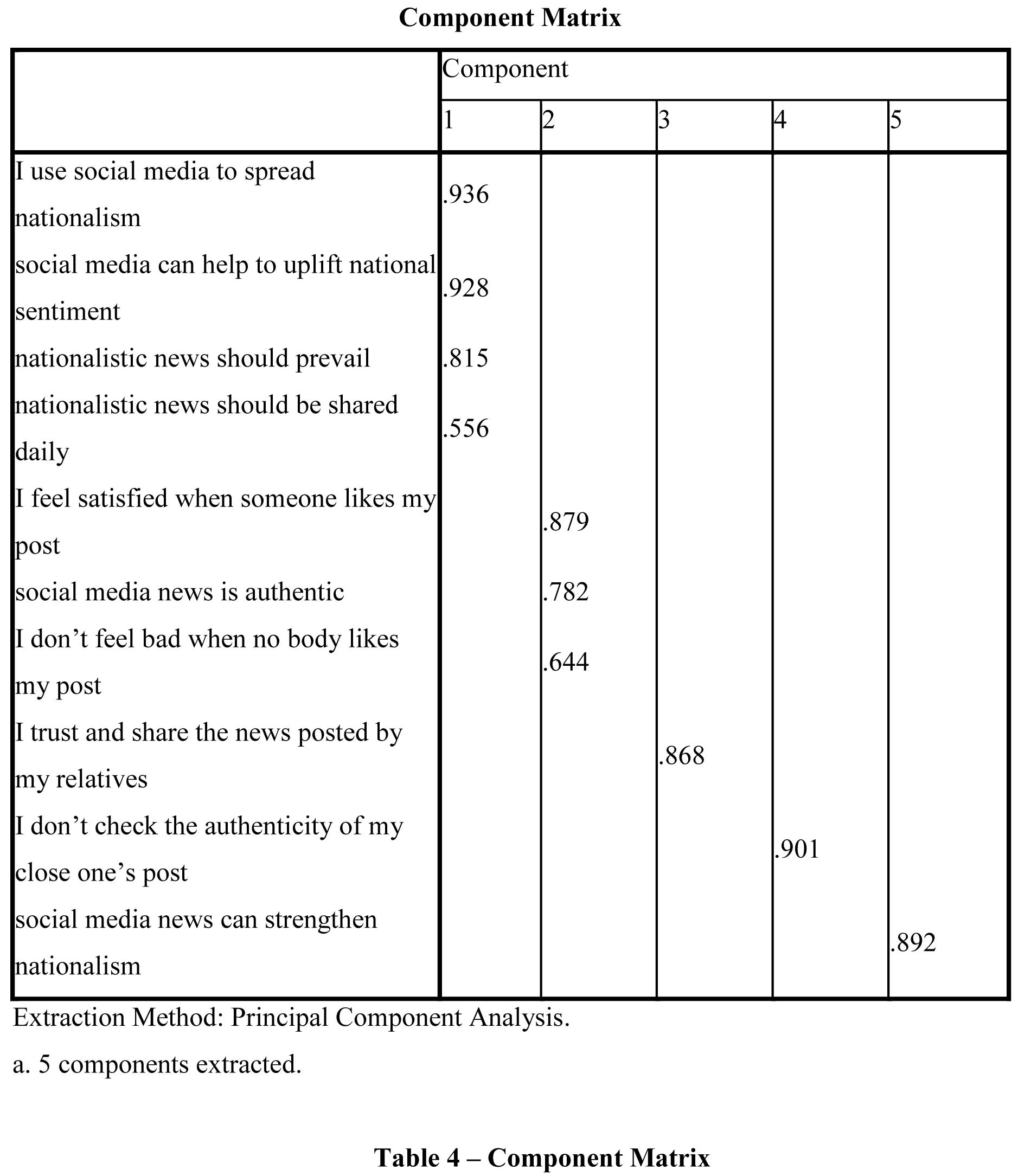
Table 4 component matrix shows the possible components that are extracted. It shows the correlation between the variables and the extracted components. These correlations are known as factor loadings. In this study the first factor is more highly correlated with the variables than the second and third.
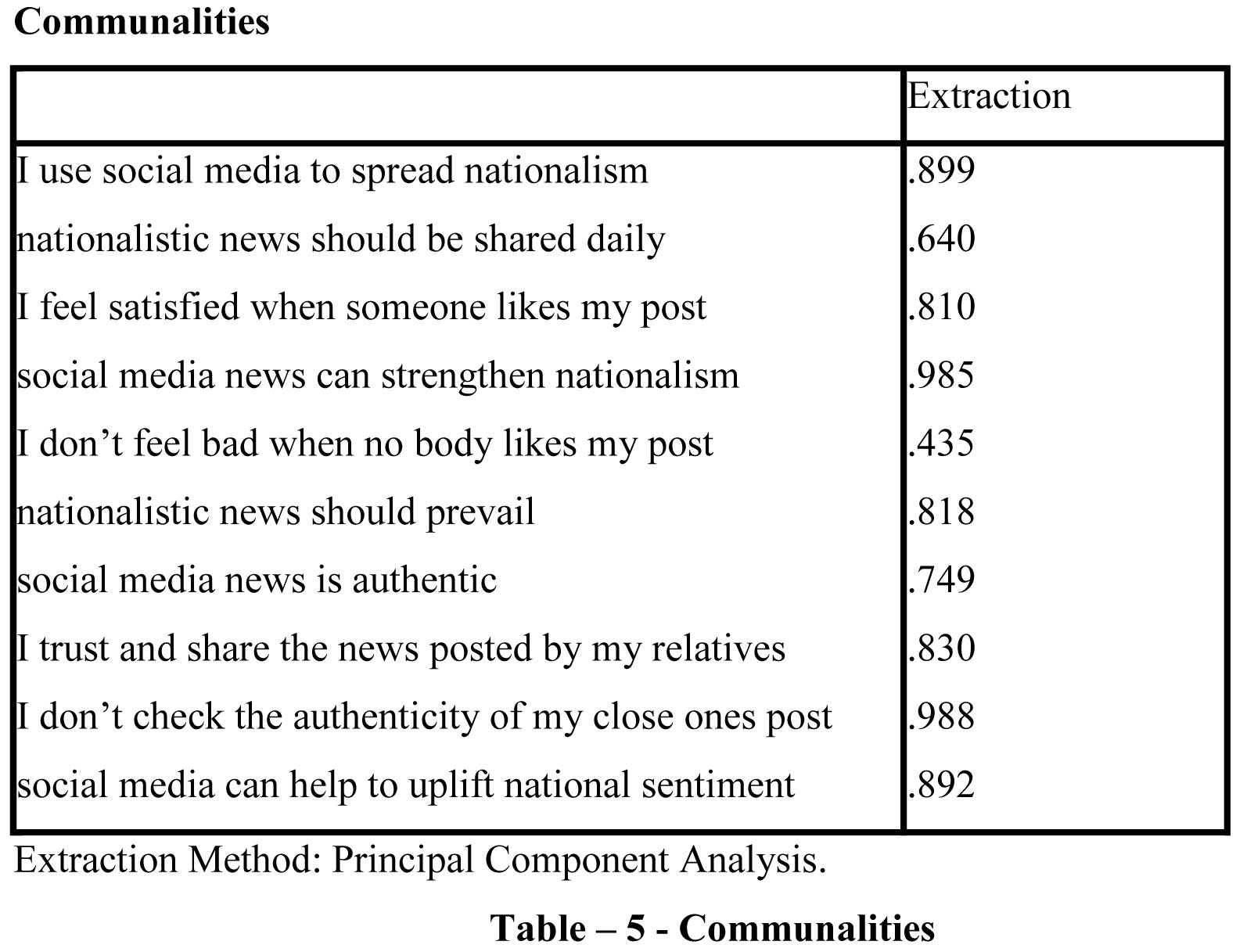
Table 5 shows the proportion of variance due to common factors and shared by several items. Communalities help to estimate the variance that is unique to each variable. It is calculated by total variances explained by that variable minus the communality of that variable.
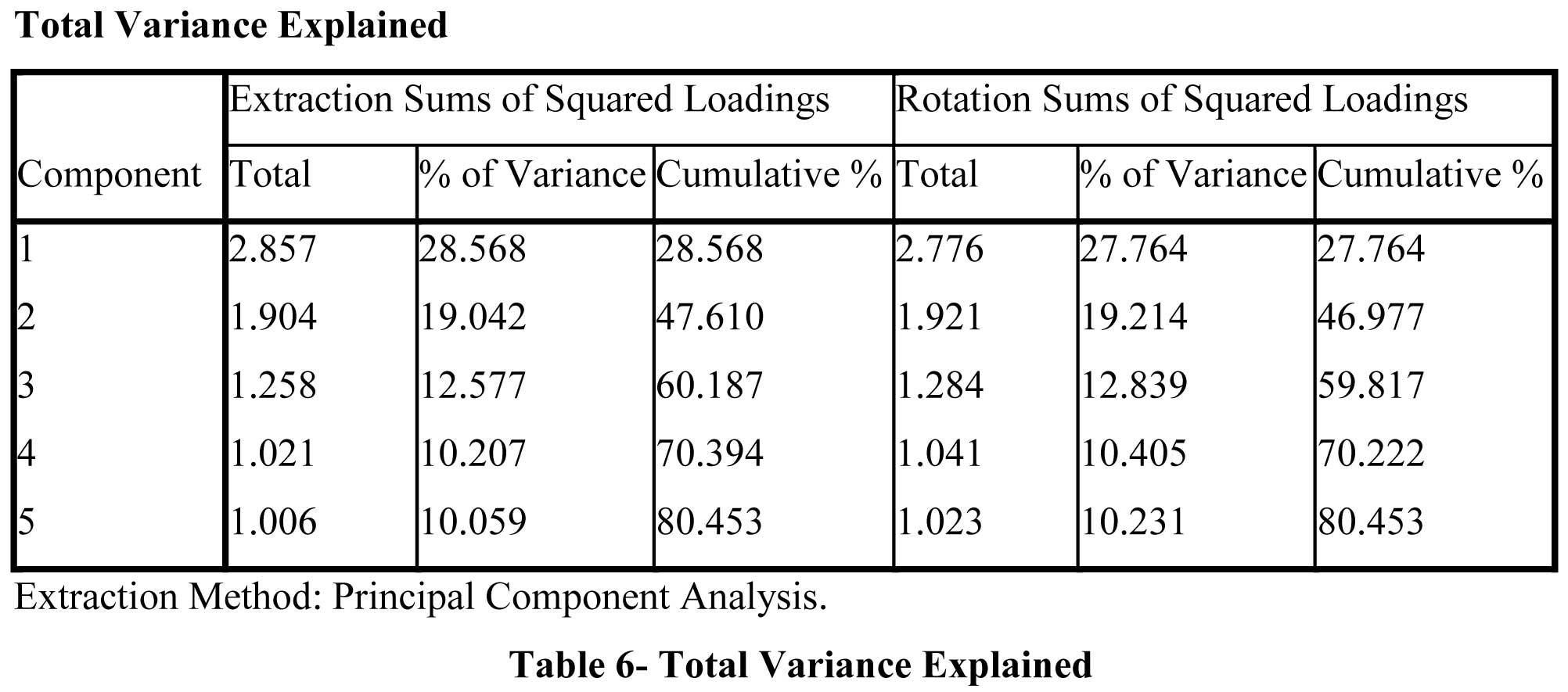
Table 6 displays the total variance, the % variance and cumulative % of variance for both un-rotated and rotated component.
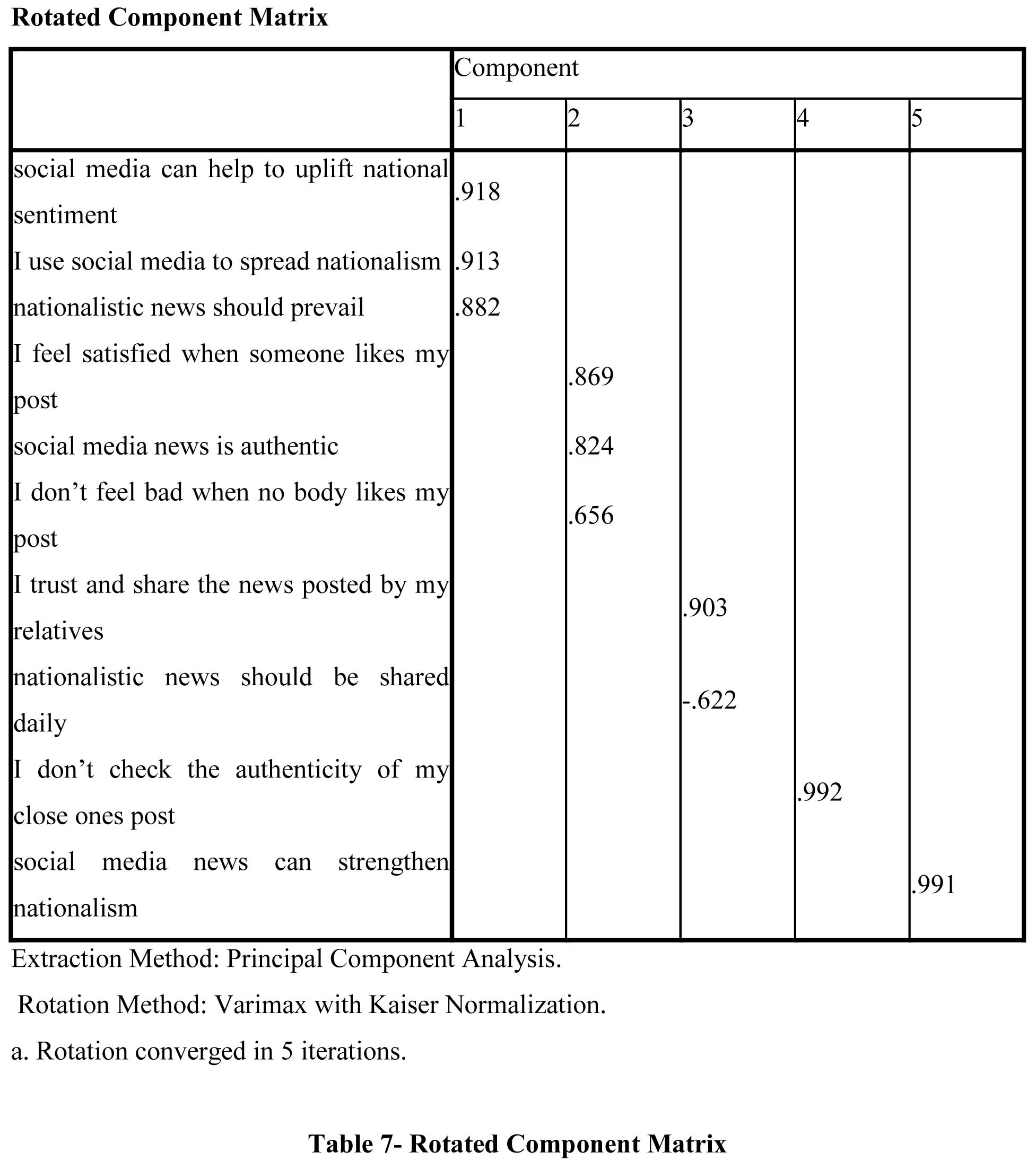
Table 7’s each number represents the partial correlation coefficient between the variable and rotated components. These coefficients help in identifying the component. All the variables that have large factor loadings for a given component define the component.
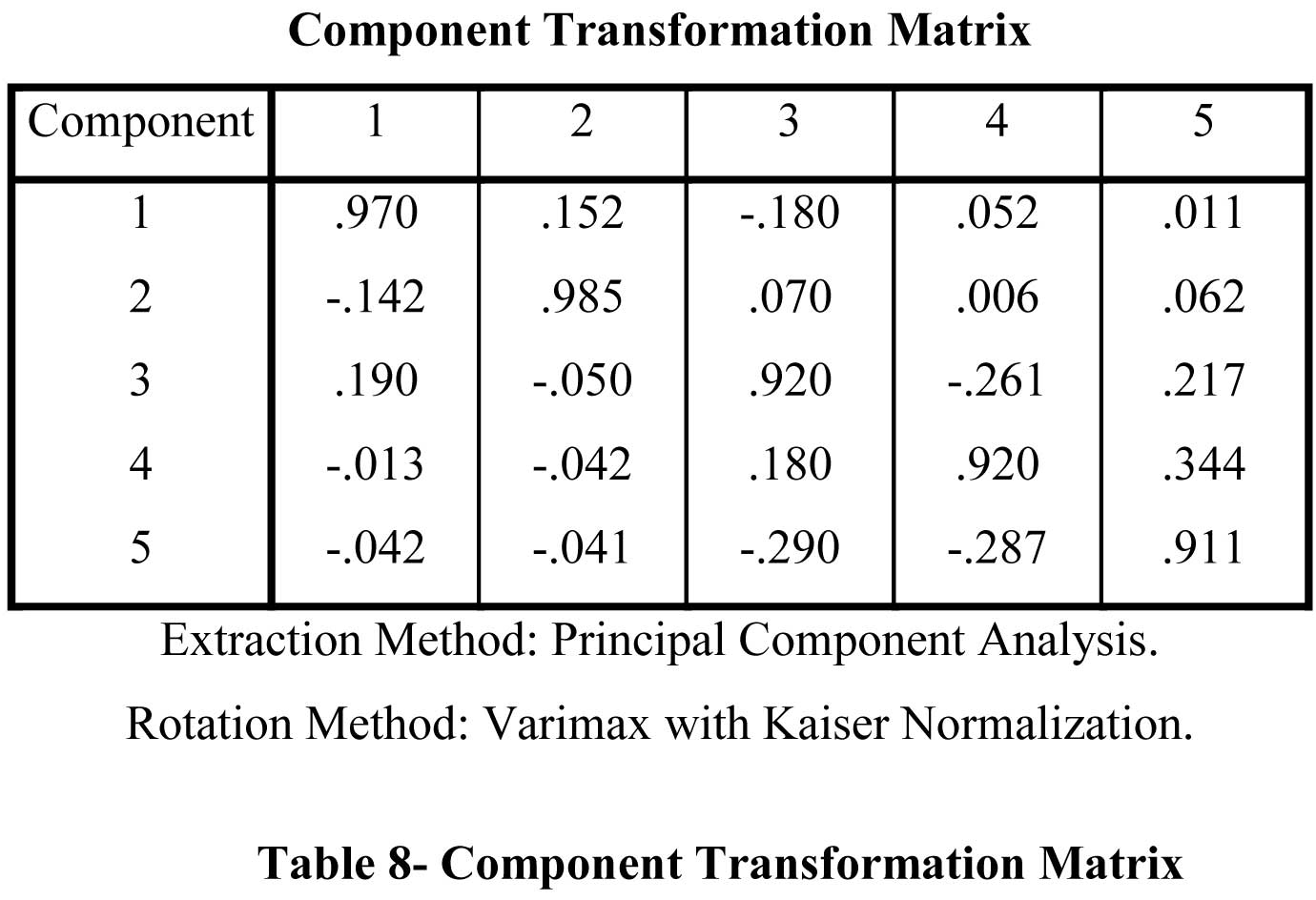
Table 8 shows the specific rotation applied to the components. Rotated factor loadings are obtained by multiplying the un-rotated factor loadings matrix with component transformation matrix.
Findings
So from the above component matrix author has derived 5 components out of which 3 are the most significant contributing factors for the spread of fake news among the students in social media ---
Factor 1
Nationalistic Perception
- social media can help to uplift national sentiment
- I use social media to spread nationalism
- nationalistic news should prevail
Factor 2
Authenticity by relative’s post
- I trust and share the news posted by my relatives
- I don’t check the authenticity of my close ones post
Factor 3
I feel satisfied when someone likes my post
Implication for Academia:
Fake news on social media domain has become an ardent research topic both for media and marketing scholars. Due to its nature of tech based impulsive behavior sometimes it also becomes research scope for behavioral domain also. This study can be used as a foundation for student based fake news spread research. Also the scope can be widened based on the findings of this study. The study can contribute both for media and management scholars as a reference especially if that is happening in Kolkata.
Implication for Industry:
The study could specifically be used by social media marketers or content marketers to restrict rumor about genuine products or services that is most prevalent today. Also having an insight into the prospective consumers’ social media behavioral intentions and practices is always beneficial for marketers and in this case it would be for social media marketers.
Limitations of the Study:
- Small sample size, thus can’t generalize the result much
- Less items for analyze, thus alpha is just on acceptable limit
- Time and other preoccupations
- Cost and manpower limitation for the survey research
- Self-funding
- Lower sample adequacy
- The respondents are not mature enough to understand the gravity of the research and technicalities of fake news thus filled up the survey form
- The respondents are not from media domain but they are from management domain
Scope of the Study:
The study can have further scope into the following areas-
- Study on trust factor of social media and marketing
- Study on coping strategies for fake news spread by the social networking sites like Facebook and all.
- Study on how fake news can be used to build brand visibility.
- Study on how fake news has the potential for calamitous impacts on individuals and society.
- Study to explore effective features for detecting fake news from multiple data sources, such as news content and social context.
References
- Amarasingam, Amarnath,ed. The Stewart/ Colbert Effect: Essays on the Real Impact of Fake News. Jefferson: McFarland, 2011.
- Bounegru, Liliana, Gray, Jonathan, Venturini, Tommaso, Mauri, Michele. A Field Guide to 'Fake News' and Other Information Disorders (January 8, 2018). Amsterdam: Public Data Lab, 2018
- Bradshaw, Samantha, Howard, Phillip N.Why does junk news spread so quickly across social media? Algorithms, advertising and exposure in public life. Oxford Internet Institute, 2018
- Robert Darnton, “The True History of Fake News”, The New York Review of Books, February 2017
- Edson Tandoc, Zheng Wei Lim & Richard Ling "Defining ‘Fake News’", Digital Journalism, 811, August 2017. pp. 1–17. 2017
- Claire Wardle & Derakhshan Hossein, Information Disorder: Toward an interdisciplinary framework for research and policymaking (Report to the Council of Europe), 2017
- John Naughton, “Facebook and Twitter could pay the price for hate speech”, The Guardian, March 2017
- Marwick, Alice E..Why do people share fake news: a sociotechnical model of media effect? Geo. L. Tech.Rev.474, 2018.
- Vosoughi, S., Roy, D., & Aral, S. (2018). The spread of true and false news online. Science, 359(6380), 1146–1151
- J. Gottfried, E. Shearer, “News use across social media platforms,” Pew Research Center, 26 May 2016
- C. Silverman, “This analysis shows how viral fake election news stories outperformed real news on Facebook,” BuzzFeed News, 16 November 2016
- S. Aral, P. Dhillon, “Unpacking novelty: The anatomy of vision advantages,” Working paper, MIT–Sloan School of Management, Cambridge, MA, 22 June 2016
